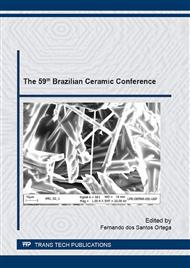p.227
p.233
p.239
p.245
p.251
p.259
p.265
p.271
p.277
Determination of Solar Reflectance Index of Ceramic Coatings for Use in outside Surfaces
Abstract:
In this study, thermal and optical properties (emittance and reflectance of solar radiation) of different colors ceramic tiles for use in outside surfaces were measured. Although widely used in the brazilian residential market, these materials are not properly characterized with respect to these properties. The thermal emittance measures were performed using an emissometer (D&S pattern SA1) and the solar reflectance using a spectrophotometer UV-Vis-NIR (model Lambda 1050). These properties are important for the determination of Solar Reflectance Index, SRI, that may help designers and consumers to choose the appropriate materials to make their buildings more energy efficient and comfortable. The SRI indicates the ability of a surface to reflect solar radiation and mitigate the temperature rise of surfaces, being used in LEED certification (Leadership in Energy and Environmental Design) to evaluate the performance of some opaque elements in constructions. The studies revealed a wide variation of SRI (values are between 72 and 22) in the same product with different colors. In particular two samples showed SRI lower than 29, which place them even below the minimum requirement of LEED for application in some types of outside surfaces, as steep roofs and pavement materials (LEED v. 2009 used in Brazil).
Info:
Periodical:
Pages:
251-256
Citation:
Online since:
November 2016
Price:
Сopyright:
© 2017 Trans Tech Publications Ltd. All Rights Reserved
Share:
Citation:


